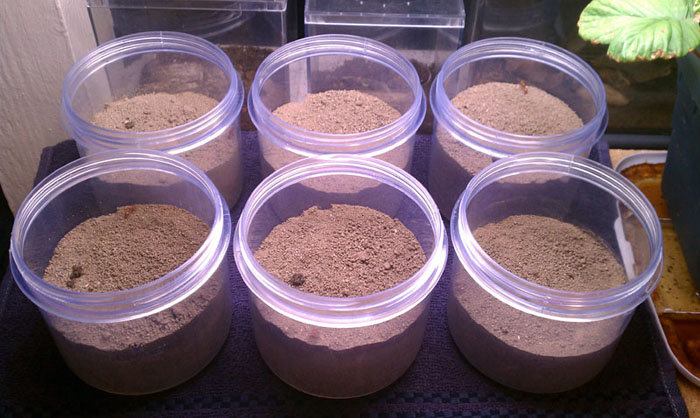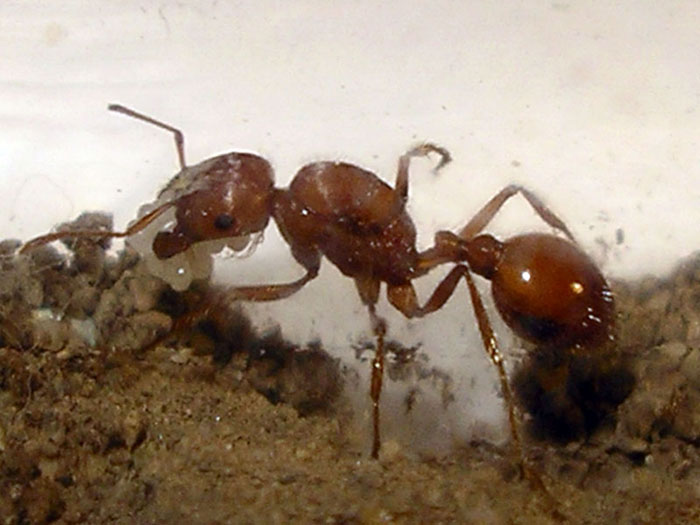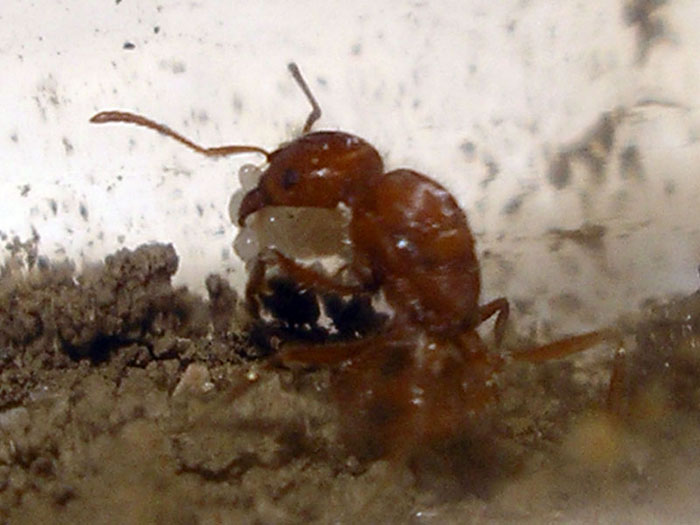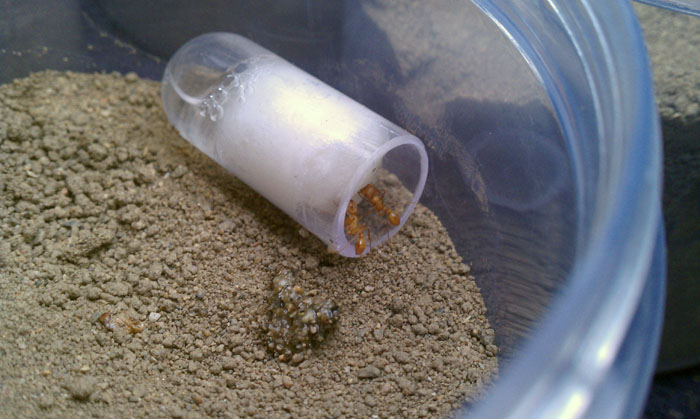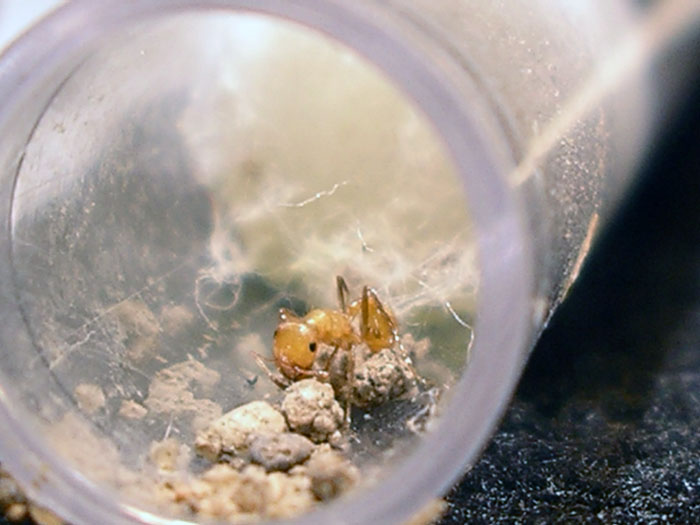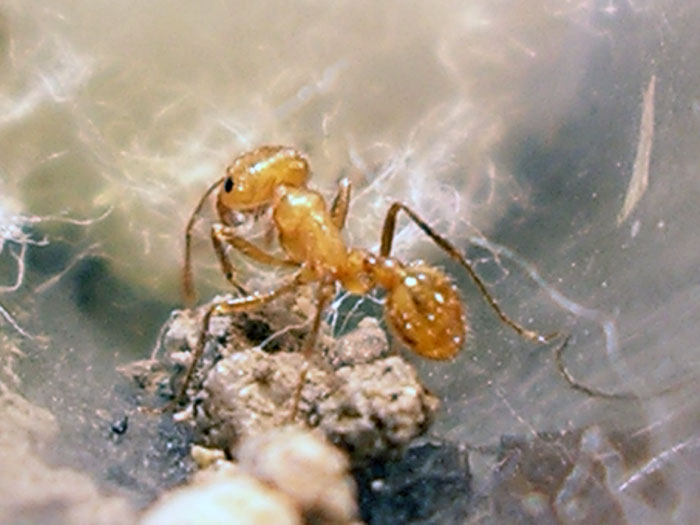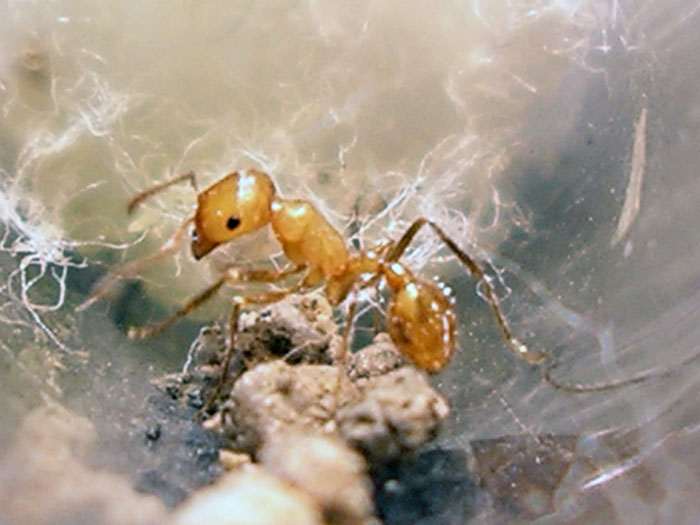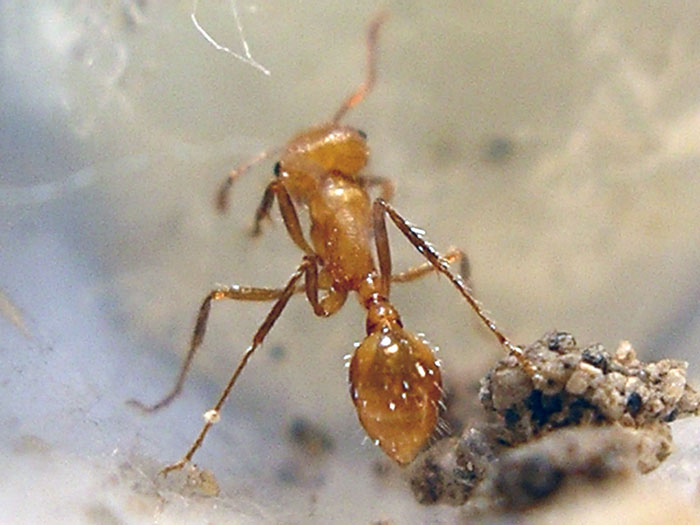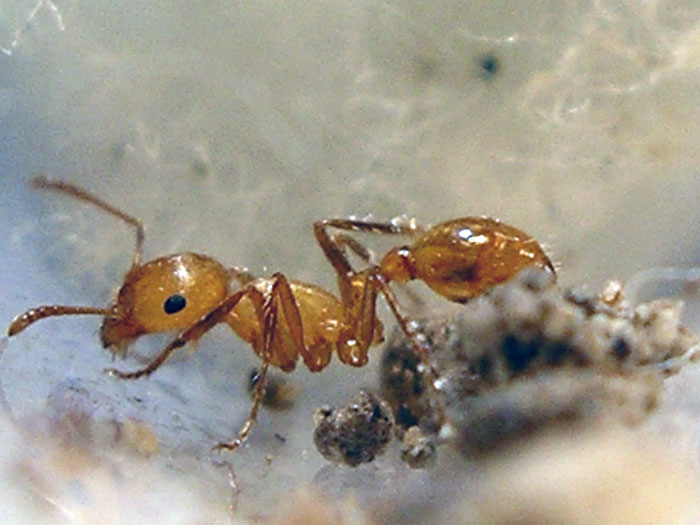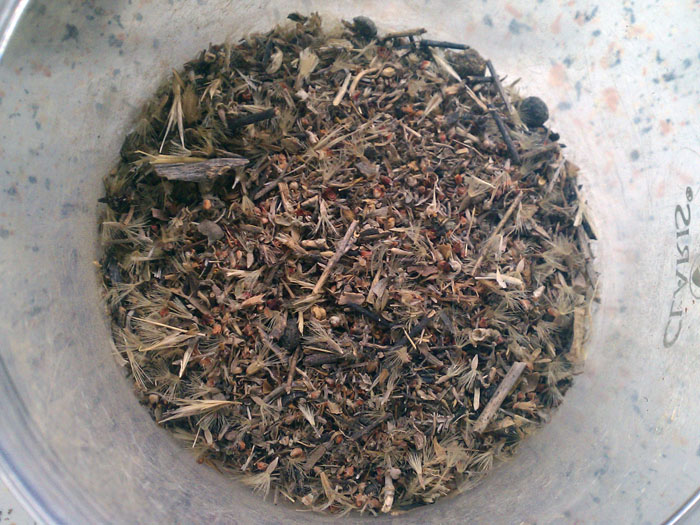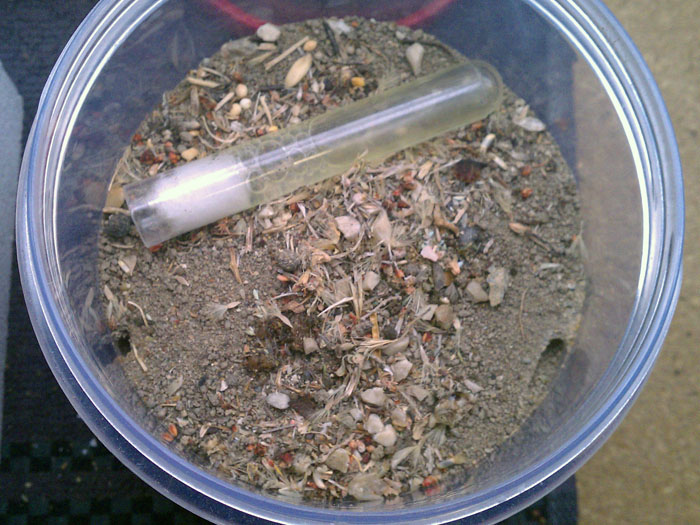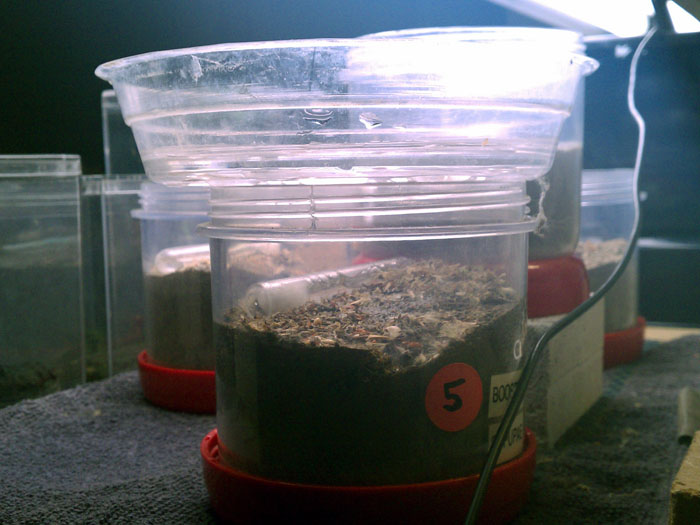On June 5th 2013 I found two Pogonomyrmex californicus alates wondering around just outside one of the nests I had been watching for the past week. I caught both of them and put them in regular test tube setups when I got home. Later that night, one of them tore its wings off, so I suspected it might be fertile. Two days later it laid three eggs. So far the other alate hasn't done anything yet. Later I added a little clay dirt to the tubes as suggested by multiple people on the forum.
On June 11th 2013 Pogonomyrmex californicus had a nuptial flight sometime in the morning. Later that day, I managed to catch eight queens from this flight. Here's a video of one I caught while she was in the middle of digging her founding chamber.
I decided to put two of these eight in test tubes, and six of them in jars as suggested by AntCzar on the forum. I'm keeping the test tubes in the dark, and I placed the jars under one of my plant lights which stays on for about 12 hours a day. For the first day, the queens in the jars ran around digging in random spots, and seemed to be unable to decide on one place to start digging their nests. Finally, today they all have nice little nests started, and one has even gone inside and closed her nest off already. As for the alate in the test tube that started laying eggs already, she is now up to 12 eggs, and seems to be the only one that's relaxed and not trying to dig her way through the cotton.
